[javascript protected email address]
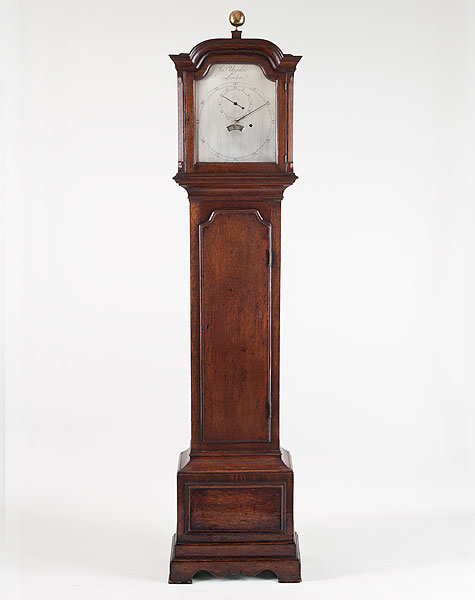
James Upjohn, London

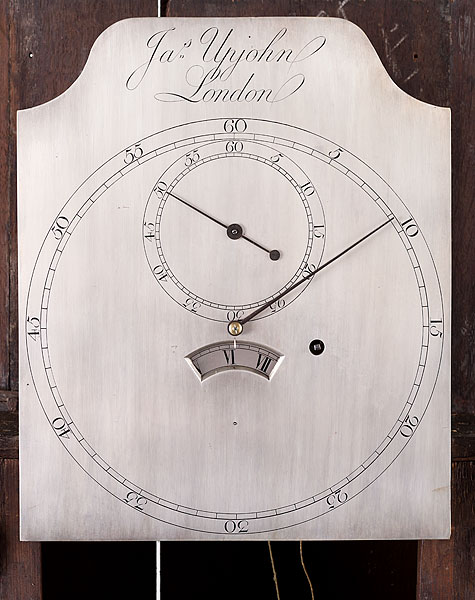
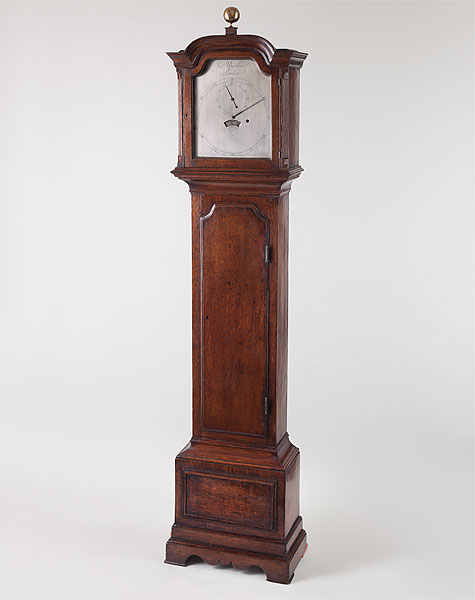
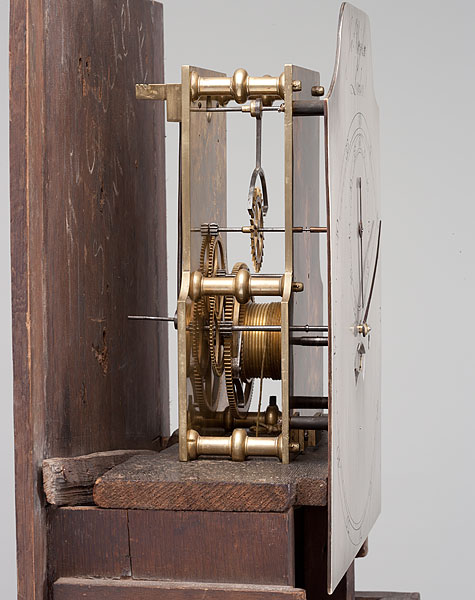
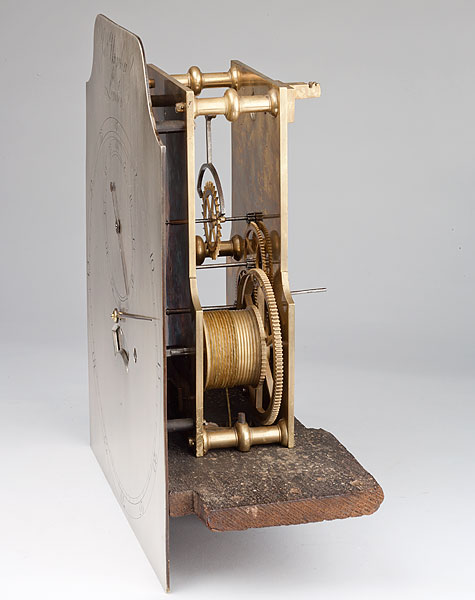
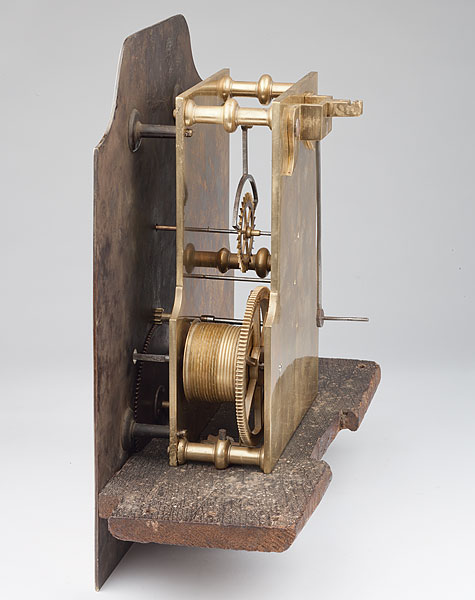
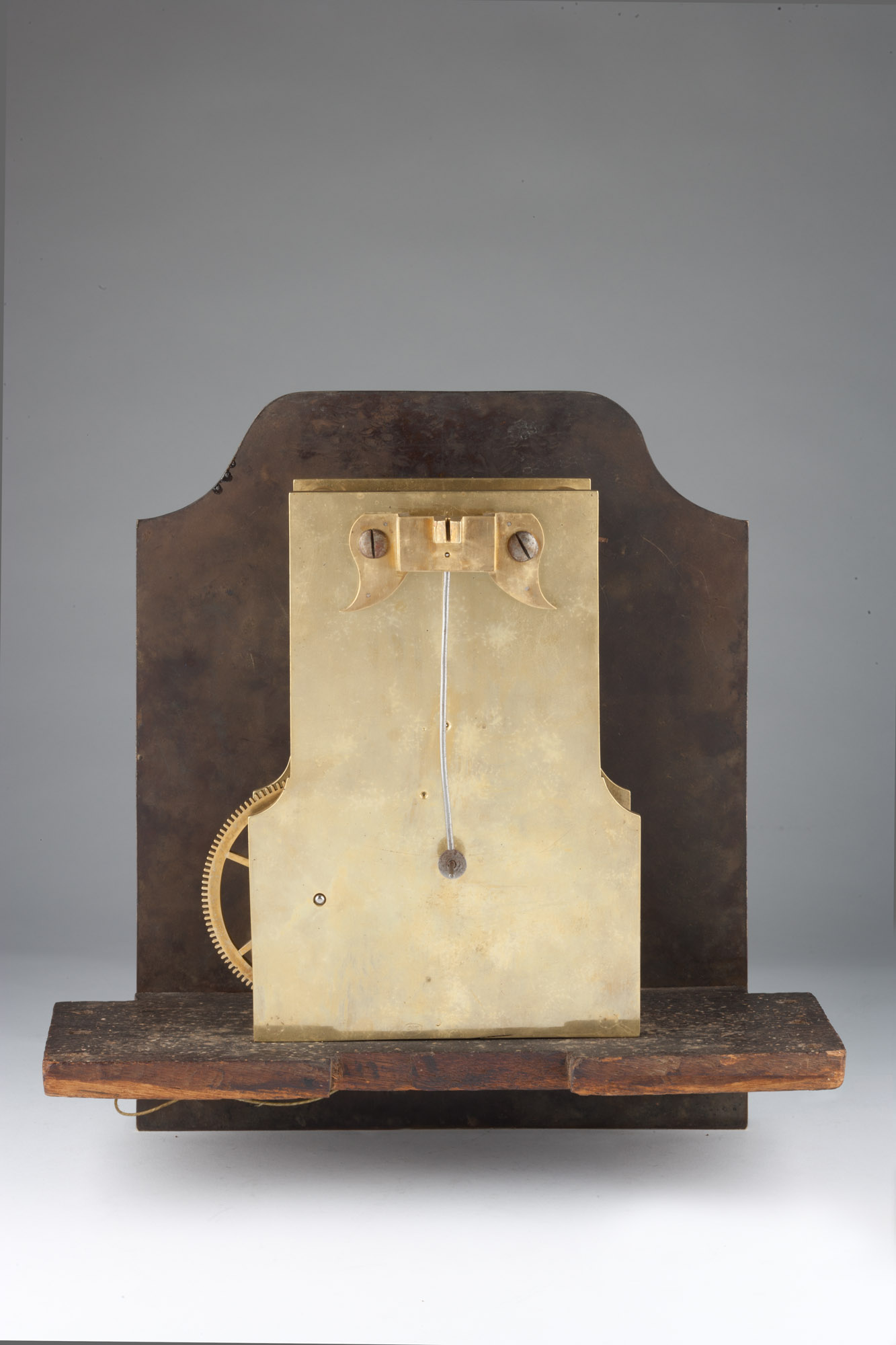
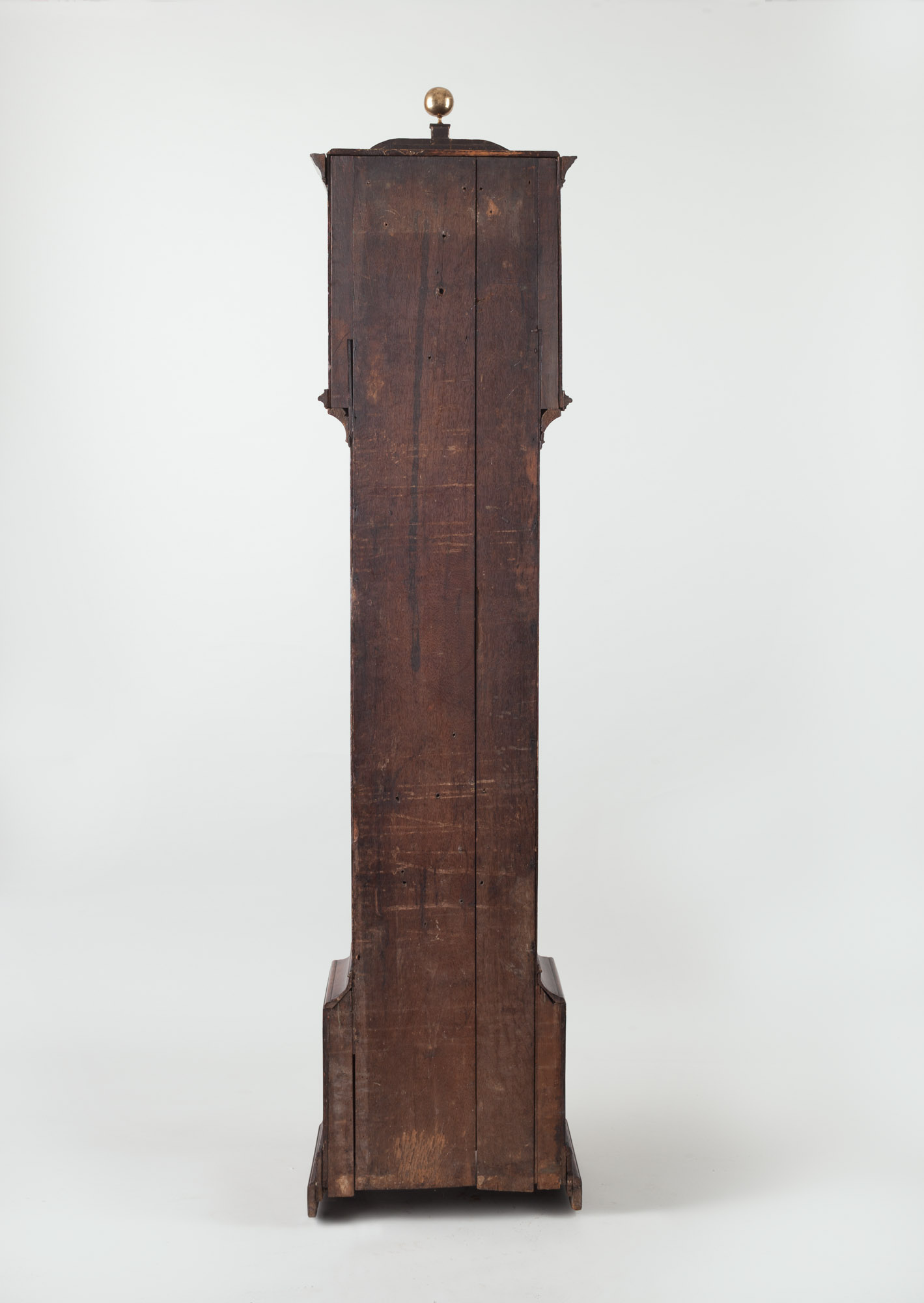
Circa 1770
Sold
6ft 4 inches high
A small oak-cased 8-day longcase regulator with shallow break-arch dial. CASE The well-coloured oak case has a shallow breakarch hood which is surmounted by a brass ball finial and flanked by stop-chamfered reeded angles, the break arch trunk door has simple brass hinges, the plinth is fronted by a raised and fielded rectangular panel and the stepped base retains the original shaped apron foot. DIAL The 10� inch x 13� inch break arched silvered regulator dial is signed Jas. Upjohn London with engraved Arabic chapters for the outer annular minutes and seconds rings with blued steel hands, the curved aperture displays the hours with Roman chapters. The substantial movement has tall thick brass rectangular plates with high quality wheel train, the deadbeat escapement is in Graham�s style and it has a very substantial iron-rod pendulum with massive brass-faced bob and calibrated rating nut James Upjohn The earliest we know about James Upjohn is in 1749 when he is recorded working in St. Martin Le grand. He then moved to Threadneedle Street and subsequently on to Lombard Street in 1765 where this clock was most likely made. He was in partnership with his son Francis until 1773 and upon his death Francis continued the business as James Upjohn & Co in Red Lion Street. INTERESTING SCRATCH MARKS The earliest clockmaker�s scratch mark we can we can find is on the inside of the front plate; JU (James Upjohn) 15th Feb. 1780 This suggests that the regulator was possibly Upjohn�s own domestic timepiece. Further scratch marks on the movement and the back of the dial indicate that the clock later went down to Exeter in Devon where other members of the Upjohn family � Edward, William, John & Thomas worked .
